| Pub # | Title |
| C72 | Navy JAG Case Files of Pacific Area War Crimes Trials, 1944-1949 |
| C73 | Army JAG Case Files of Pacific Area War Crimes Trials, 1944-1949 (Including Iwanami Case) |
| M40 | Domestic Letters of the Department of State, 1784-1906 |
| M61 | Foreign Letters of the Continental Congress and Department of State, 1785-1790 |
| M162 | The Revolutionary War Prize Cases: Records of the Court of Appeal in Cases of Capture, 1776-1787 |
| M246 | Revolutionary War Rolls, 1775-1783 |
| M247 | Papers of the Continental Congress |
| M251 | Compiled Service Records of Confederate Soldiers Who Served in Organizations from the State of Florida |
| M258 | Compiled Service Records of Confederate Soldiers Who Served in Organizations Raised Directly by the Confederate Government. |
| M266 | Compiled Service Records of Confederate Soldiers Who Served in Organizations from the State of Georgia |
| M267 | Compiled Service Records of Confederate Soldiers Who Served in Organizations from the State of South Carolina |
| M268 | Compiled Service Records of Confederate Soldiers Who Served in Organizations from the State of Tennessee |
| M269 | Compiled Service Records of Confederate Soldiers Who Served in Organizations from the State of Mississippi |
| M270 | Compiled Service Records of Confederate Soldiers Who Served in Organizations from the State of North Carolina |
| M276 | Compiled Service Records of Volunteer Union Soldiers Who Served in Organizations From the State of Alabama. |
| M311 | Compiled Service Records of Confederate Soldiers Who Served in Organizations from the State of Alabama |
| M318 | Compiled Service Records of Confederate Soldiers Who Served in Organizations From the Territory of Arizona. |
| M319 | Compiled Service Records of Confederate Soldiers Who Served in Organizations from the State of Kentucky |
| M320 | Compiled Service Records of Confederate Soldiers Who Served in Organizations from the State of Louisiana |
| M321 | Compiled Service Records of Confederate Soldiers Who Served in Organizations From the State of Maryland. |
| M322 | Compiled Service Records of Confederate Soldiers Who Served in Organizations from the State of Missouri |
| M323 | Compiled Service Records of Confederate Soldiers Who Served in Organizations from the State of Texas |
| M324 | Compiled Service Records of Confederate Soldiers Who Served in Organizations from the State of Virginia |
| M331 | Compiled Service Records of Confederate General and Staff Officers, and Nonregimental Enlisted Men |
| M332 | Miscellaneous Papers of the Continental Congress |
| M346 | Confederate Papers Relating to Citizens or Business Firms, 1861-65 |
| M367 | Records of the Department of State Relating to World War I and its Termination, 1914-1929 |
| M570 | Copybooks of George Washington's Correspondence with Secretaries of State, 1789-1796 |
| M599 | Investigation and Trial Papers Relating to the Assassination of President Lincoln |
| M653 | 1860 U.S. Federal Census - Population |
| M668 | Ratified Indian Treaties, 1722-1869 |
| M787 | Civil War IRS Records for State of Pennsylvania, 1862-66 |
| M804 | Revolutionary War Pension and Bounty-Land Warrant Application Files |
| M835 | Select List of Photographs of Harry S. Truman, 1885-1953 |
| M865 | Selected Photographs of Franklin D. Roosevelt, 1913-1945 |
| M866 | Records from the Constitutional Convention of 1787 |
| M867 | Selected Photographs of Calvin Coolidge, 1917-1943 |
| M868 | Selected Photographs of Dwight D. Eisenhower, 1943-1961 |
| M881 | Compiled Service Records of Soldiers Who Served in the American Army During the Revolutionary War |
| M923 | Records of the American Section of the Supreme War Council, 1917-19 |
| M924 | Historical Files of the U.S. Expeditionary Force, North Russia, 1918-19 |
| M928 | Prize and Related Records for the War of 1812 of the U.S. District Court for the Southern District of New York, 1812-16 |
| M930 | Cablegrams Exchanged Between General Headquarters, American Expeditionary Forces, and the War Department, 1917-19 |
| M990 | Gorrell's History of the American Expeditionary Forces Air Service, 1917-1919 |
| M995 | Papers and Minutes of Meetings of Principal World War II Allied Military Conferences, 1941-1945 |
| M1003 | Case Files of Applications from Former Confederates for Presidential Pardons ("Amnesty Papers"), 1865-67 |
| M1017 | Compiled Service Records of Former Confederate Soldiers who Served in the 1st Through 6th U.S. Volunteer Infantry Regiments, 1864-1866. |
| M1085 | Investigative Case Files of the Bureau of Investigation 1908-1922 |
| M1148 | General Photographs of the Fine Arts Commission (Series G), CA. 1650-1950 |
| M1164 | Index to the Naturalization Petitions of the United States District Court for the Eastern District of New York, 1865-1957 |
| M1164 | Index to the Naturalization Petitions of the United States District Court for the Eastern District of New York, 1906-Nov 1925 |
| M1164 | Index to the Naturalization Petitions of the United States District Court for the Eastern District of New York, Jul 1865-Sep 1906 |
| M1168 | Indexes to Naturalization Petitions to the U.S. Circuit and District Courts for Maryland, 1797-1951 |
| M1279 | Case Files of Approved Pension Applications of Widows and Other Dependents of Civil War and Later Navy Veterans (Navy Widows' Certificates), 1861-1910 |
| M1301 | Applications for Enrollment of the Commission to the Five Civilized Tribes, 1898-1914 |
| M1360 | Admiralty Final Record Books of the U.S. District Court for the Southern District of Florida (Key West), 1829-1911 |
| M1368 | Petitions and Records of Naturalizations of the U.S. District and Circuit Courts of the District of Massachusetts, 1906-1929 |
| M1372 | Passport Applications, 1795-1905 |
| M1380 | Missing Air Crew Reports (MACRs) of the U.S. Army Air Forces, 1941-1948 |
| M1401 | Territorial Case Files of the U.S. District Courts of Utah 1870-1896 |
| M1407 | Southern Claims Commission |
| M1442 | Records of the Department of State Relating to Internal Affairs of France, 1930-1939 |
| M1469 | Case Files of Approved Pension Applications of Civil War and Later Navy Veterans (Navy Survivors' Certificates), 1861-1910 |
| M1518 | Ratified Amendments XI-XXVII of the U. S. Constitution |
| M1522 | Naturalization Petitions for the Eastern District of Pennsylvania, 1795-1930 |
| M1524 | Naturalization Petitions for the Southern District Of California, 1887-1940 |
| M1526 | Naturalization Index Cards from the Superior Court of San Diego, CA, 1868-1958 |
| M1537 | Naturalization Petitions of the U.S. District Court, 1820-1930, and Circuit Court, 1820-1911, for the Western District of Pennsylvania |
| M1545 | Index to Petitions and Records of Naturalizations of the U.S. and District Courts for the District of Massachusetts, 1907-1966 |
| M1613 | Naturalization Records in the Superior Court of San Diego, CA, 1883-1958 |
| M1614 | Naturalization Records of the Superior Court of Los Angeles, CA, 1876-1915 |
| M1626 | Naturalization Petitions of the U.S. Circuit and District Courts for the Middle District of Pennsylvania, 1906-1930 |
| M1640 | Naturalization Petitions of the U.S. District Court for the District of Maryland, 1906-1930 |
| M1653 | U.S. Strategic Bombing Survey (Pacific): Japanese Air Target Analyses, Objective Folders, and Aerial Photographs, 1942-45 |
| M1674 | Soundex Index to Petitions for Naturalizations Filed in Federal, State, and Local Courts in New York City, 1792-1906 |
| M1675 | Alphabetical Index to Declarations of Intention of the U.S. District Court for the Southern District of New York, 1917-1950 |
| M1676 | Alphabetical Index to Petitions for Naturalization of the US District Court [and Circuit Court] for the Southern District of New York, 1824-1941 |
| M1677 | Alphabetical Index to Petitions for Naturalizations of the U.S. District Court for the Western District of New York, 1907-1966 |
| M1733 | Photographs of Japanese Soldiers and of Allied Prisoners of War, 1942-1945 |
| M1752 | U.S. Submarine War Patrol Reports, 1941-1945 |
| M1753 | Records Relating to the Various Cases Involving the Spanish Schooner AMISTAD, 1815-1858 |
| M1787 | Compiled Service Records of Volunteer Union Soldiers Who Served in Organizations from the Territory of Nebraska. |
| M1789 | Compiled Service Records of Volunteer Union Soldiers Who Served in Organizations from the Territory and State of Nevada. |
| M1816 | Compiled Service Records of Volunteer Union Soldiers Who Served in Organizations from the State of Oregon. |
| M1820 | Compiled Military Service Records of Volunteer Union Soldiers Who Served With the United States Colored Troops, 2nd through 7th Colored Infantry including 3d Tennessee Volunteers (African Descent), 6th Louisiana Infantry (African Descent), and 7th Louisiana Infantry (African Descent). |
| M1821 | Compiled Service Records of Volunteer Union Soldiers Who Served with the United States Colored Troops: Infantry Organizations, 8th through 13th, including the 11th (new). |
| M1879 | Petitions for Naturalization of the US District Court for the Eastern District of New York, 1865-1937 |
| M1899 | Court-Martial Case Files Relating to the "Hesse Crown Jewels Case", 1944-1952 |
| M1915 | Land Entry Case Files of the Broken Bow Land Office, Broken Bow, NE: Homestead Final Certificates, 1890-1908 |
| M1952 | Index to Naturalizations of World War I Soldiers, 1918 |
| M1972 | Petitions for Naturalization of the US District Court for the Southern District of New York, 1897-1944 |
| M1995 | Naturalization Petition and Record Books for the US District Court for the Northern District of Ohio, Eastern Division, Cleveland, 1907-1946 |
| M2012 | Appellate Case File No. 2161, United States v. The Amistad, 40 U.S. 518 (15 Peters 518), Decided March 9, 1841, and Related Lower Court and Department of Justice Records |
| P2012 | 13th Naval District Public Information Department Press Clippings, 1942-1960 |
| P2233 | Records of the U.S. Circuit Court for the Eastern District of Louisiana, New Orleans Division: Petitions, 1838-1861 |
| T252 | Mathew B Brady Collection of Civil War Photographs |
| T289 | Organization Index to Pension Files of Veterans Who Served Between 1861 and 1900. |
| T1103 | General Court Martial of Gen. George A. Custer, 1867 |
| T1196 | Selected Pension Application Files Relating to the Mormon Battalion, Mexican War, 1846-48 |
| T1206 | Project Blue Book, 1947-1969 |
| T1249 | Records of the Department of State Relating to Internal Affairs of the Soviet Union, 1930-1939 |
| Click here | Case Files of Approved Pension Applications of Widows and Other Dependents of Civil War Veterans, ca. 1861 - ca. 1910 |
| Click here | Pearl Harbor Muster Rolls |
| Click here | Southern Claims Commission Approved Claims, 1871-1880 |
| Click here | Black and White and Color Photographs of U.S. Air Force and Predecessor Agencies Activities, Facilities, and Personnel - World War II |
| Click here | Photographs of Marine Corps Activities in Vietnam, 1962-1975 (Color) |

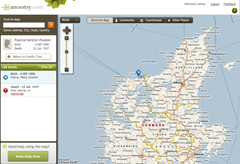
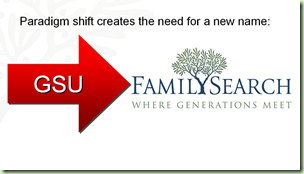 The
The 
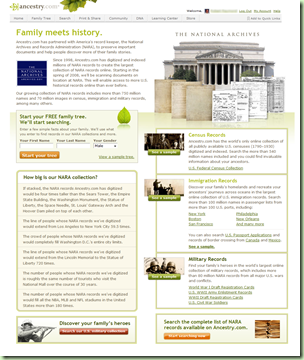 Ancestry.com sets the standard in helping NARA patrons access NARA publications that Ancestry.com has placed online. Not that it can't be improved upon, but other vendors would do well to check out the minimum standard set by Ancestry.com.
Ancestry.com sets the standard in helping NARA patrons access NARA publications that Ancestry.com has placed online. Not that it can't be improved upon, but other vendors would do well to check out the minimum standard set by Ancestry.com.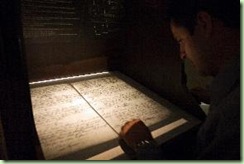 I venture to say, if it isn't available online, if NARA has published the records on microfilm then your
I venture to say, if it isn't available online, if NARA has published the records on microfilm then your 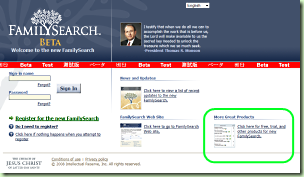 I examined the beta and found a new link on the home page. Circled in green in the screen shot to the right, there is a new icon and link that promotes 3rd party vendors that have certified products that work with NFS. I won't say anything about the page it links to, as it looks preliminary at this time.
I examined the beta and found a new link on the home page. Circled in green in the screen shot to the right, there is a new icon and link that promotes 3rd party vendors that have certified products that work with NFS. I won't say anything about the page it links to, as it looks preliminary at this time.
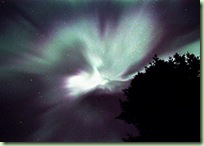
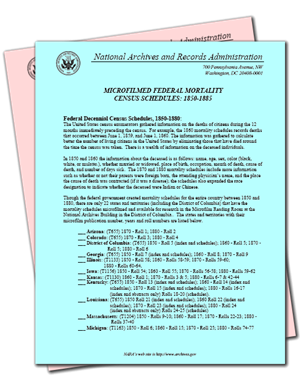
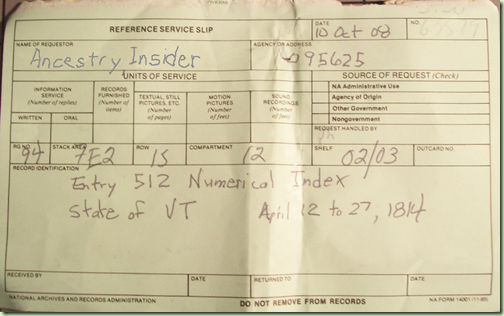


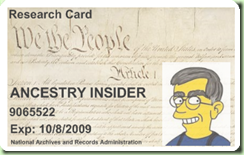 Once you have a research card, anytime you sign in to the archives or to a research area, you can jot down your research card number in lieu of your contact information. If you skipped signing in at the reception desk and/or the reference desk to get your card, return to each and check to see if they want you to sign in.
Once you have a research card, anytime you sign in to the archives or to a research area, you can jot down your research card number in lieu of your contact information. If you skipped signing in at the reception desk and/or the reference desk to get your card, return to each and check to see if they want you to sign in.
